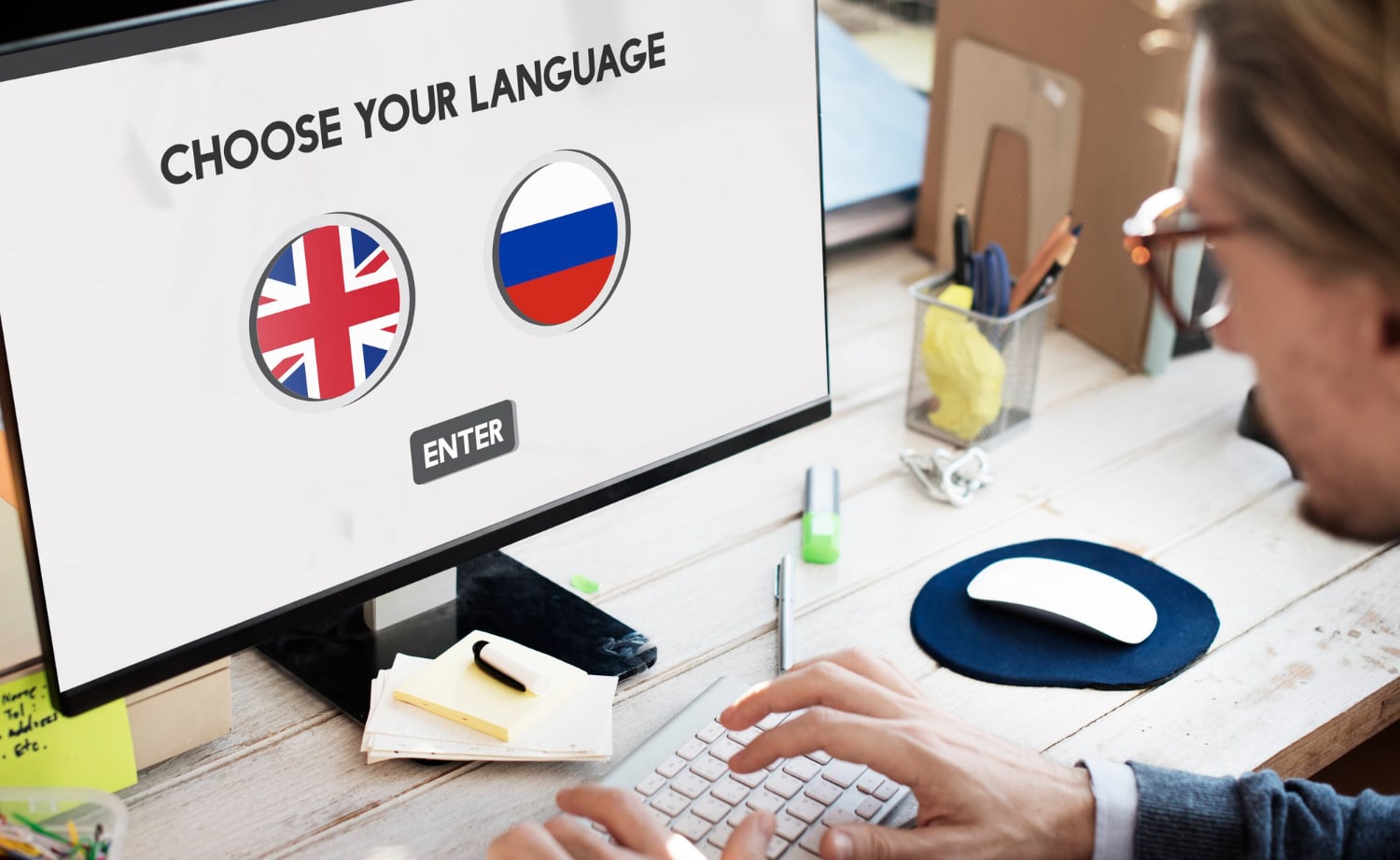
E-learning content localization for international audiences

E-learning has become a vital tool for education and training at the global level. However, for online courses to be truly effective and accessible to international audiences, it is not enough to translate the contents: it is necessary to localize them. The localization of e-learning involves adapting educational materials to different languages, cultures and regional contexts, to ensure their relevance and understanding for all users.
In this article we will explore the importance of this process and share best practices to achieve effective localization.
- What is e-learning localization?
- Importance of localizing educational content
- Challenges in localizing virtual courses
- Best practices for e-learning localization
- Tools and resources for localizing educational content
What is e-learning localization?
The localization of e-learning is the process of adapting digital educational materials to be appropriate, accessible and relevant to different international audiences. This process goes beyond the simple translation of textual content, as it involves the adaptation of multiple elements to ensure that learning is effective and culturally appropriate for each target audience.
In the localization of e-learning content, key aspects must be considered such as the technical and academic terminology specific to each region, the adequacy of graphics, images and colors according to cultural preferences, and the synchronization of subtitles and dubbing in audiovisual materials. It also includes the adaptation of user interfaces, date formats and units of measurement, as well as currency conversion and legal or institutional references when necessary.
Unlike direct translation, virtual course localization requires in-depth knowledge of the cultural and educational contexts of each market. This means, for example, understanding local educational regulations and standards.
Having localized content contributes to a better understanding of them and optimizes the user experience. By adapting e-learning materials to each audience, companies and educational institutions can expand their global reach, as they offer more effective and meaningful learning experiences in the different markets in which they are located.
Importance of localizing educational content

As we have seen, e-learning localization plays a fundamental role in today’s globalized education, since it allows educational content to be understandable, accessible and effective for various audiences. Adapting a course to the language and culture of students not only improves the learning experience, but also maximizes the impact and profitability of training initiatives.
Below, we are going to analyze the main reasons why localization in this area is essential:
- Accessibility: eliminates language and cultural barriers to facilitate access to education for people from different regions and contexts. It is not limited only to the translation of texts, it also ensures that the examples, references and visual elements are suitable for each audience. In addition, a well-executed localization considers digital accessibility and tailors materials to the needs of people with visual, hearing, or cognitive disabilities.
- Educational effectiveness: students better understand and retain information when the content appears in their native language and adapts to their cultural environment.
- Greater engagement and motivation: localized virtual courses offer a more engaging, immersive and motivating experience. When materials are tailored to the needs of a specific audience, students feel more involved and engaged in their learning. This increases course completion rates and reduces dropout, common challenges in e-learning. In addition, the adaptation of multimedia elements, such as voice-over narratives, videos and interactive examples, strengthens user participation.
- Global expansion and scalability: educational institutions, training companies and organizations operating in multiple markets can use linguistic and cultural adaptation as a key growth strategy. This practice makes it possible to reach wider and more diversified audiences without losing the effectiveness of the content. Well-planned localization facilitates the scalability of educational programs and allows a smooth transition to new languages and markets without compromising the quality or consistency of learning.
- Regulatory compliance and adaptation to local standards: In many countries, there are significant differences in educational regulations and training requirements. The localization of e-learning not only adjusts the contents to the language and culture of the public, but also adapts the courses to the specific regulations of each region to guarantee compliance with educational standards, certifications and local regulations.
Challenges in localizing virtual courses

Although the localization of virtual courses represents a key factor in democratizing learning, improving the user experience and expanding knowledge globally, this sector also poses a number of challenges that require meticulous attention:
- Cultural differences: adapting the contents, such as examples, images and references, is complex when seeking to guarantee their cultural relevance. This difficulty increases in sensitive or specific topics, where it is essential to avoid misunderstandings or inappropriate interpretations.
- Format and design: adjusting the design and structure of the course to the preferences and expectations of different cultures is essential to offer an optimal user experience in all regions. Elements such as the layout of the text, the symbology and the use of color can influence the perception and understanding of the content.
- Technical terminology: Translating field-specific terms accurately and clearly is crucial to maintaining consistency and understanding of the content. A misinterpretation can affect the effectiveness of learning and generate confusion in students.
- Multimedia resources: adapting videos, graphics and other multimedia elements involves more than simply translating texts on the screen. Adjusting voiceovers, subtitles and visual formats allows us to ensure that the materials are effective and understandable in all markets, without losing impact or accessibility.
Best practices for e-learning localization
How to overcome the challenges involved in localizing online courses and ensure that the content is effective in different markets? Applying appropriate strategies allows optimizing the adaptation of educational material and offering more inclusive and relevant learning experiences. Below are some key recommendations:
- Cultural research: analysing the cultural and educational differences of the target audience makes it possible to adapt the contents appropriately. Considering factors such as tone of language, examples used, and cultural references helps make the course more relevant and engaging for each audience.
- Collaboration with local experts: having translators and localization specialists who know in depth the cultural and educational context of each region facilitates the creation of effective content aligned with the expectations of the public.
- Terminology consistency: Applying glossaries and terminology databases ensures consistency of content and accuracy in translation. Maintaining uniform terminology allows students to understand the material more clearly.
- Multimedia adaptation: adjusting the text and multimedia elements ensures that they are culturally relevant and understandable in each region. Aligning each visual and auditory resource with the expectations of the audience improves the learning experience.
- Testing and feedback: Conducting usability tests with local users and collecting detailed feedback helps identify opportunities for improvement in localization and optimize the effectiveness of the course.
By applying these best practices, we manage to minimize the obstacles associated with localizing online courses and maximize the impact of the content in different markets.
Tools and resources for localizing educational content
To overcome the challenges of e-learning localization and apply the best practices described, it is essential to have tools and resources that facilitate the process. The localization of virtual courses not only requires linguistic and cultural knowledge, but also the use of technologies that optimize the adaptation of the content and ensure its coherence in different markets. Some of the most effective solutions include:
- Computer-aided translation (CAT) software: tools such as Trados, MemoQ or Smartcat allow you to manage localization projects efficiently, maintaining terminological consistency and speeding up the translation process. These platforms include translation memories and terminology databases that improve quality and reduce costs in the long run.
- E-learning platforms compatible with learning management systems (LMS) such as Moodle, Articulate 360 or Adobe Captivate offer support for content localization, facilitating the integration of different languages and cultural adaptations within the same course. These tools allow you to customize the learning experience according to the needs of each market.
- Glossaries and terminology bases: the use of terminology bases specific to each educational or professional sector guarantees the accuracy and uniformity of the translated content. These resources are essential to avoid inconsistencies and ensure that the terminology used is understandable and appropriate for the target audience.
- Company specialized in e-learning localization: having an agency like Nóvalo, specialized in localizing online courses, allows companies to translate their content, adapt the graphic, audiovisual and pedagogical elements to guarantee an effective and relevant learning experience.
E-learning platforms development
However, although the standard tools on the market offer solutions suitable for the localization of educational content, in many cases institutions and companies need to develop customized training platforms that go beyond conventional options. An own virtual campus allows adapting the experience to the specific needs of the students, which guarantees efficient and accessible learning.
An example of this is the project we developed for AEDAF (Spanish Association of Tax Advisors). The association needed an online campus that ensured the continuous training of its more than 3,400 tax advisors and adjusted to the specific requirements of the sector and the high specialization of its contents.
At Nóvalo, we designed a platform completely adapted to your community, to optimize usability and facilitate access to content with an intuitive digital environment. This approach demonstrates that, in some cases, the best solution for e-learning localization does not lie only in translating content within a standard LMS, but in developing customized platforms that seamlessly integrate localized materials and offer a practical educational experience.
As we have seen, investing in the right tools and resources simplifies the process and improves the quality of learning, accessibility and the user experience. By applying a comprehensive approach that combines technology and experts and tests with real users, educational institutions and training companies can offer content that transcends language and cultural barriers.





Sin respuestas a "E-learning content localization for international audiences"